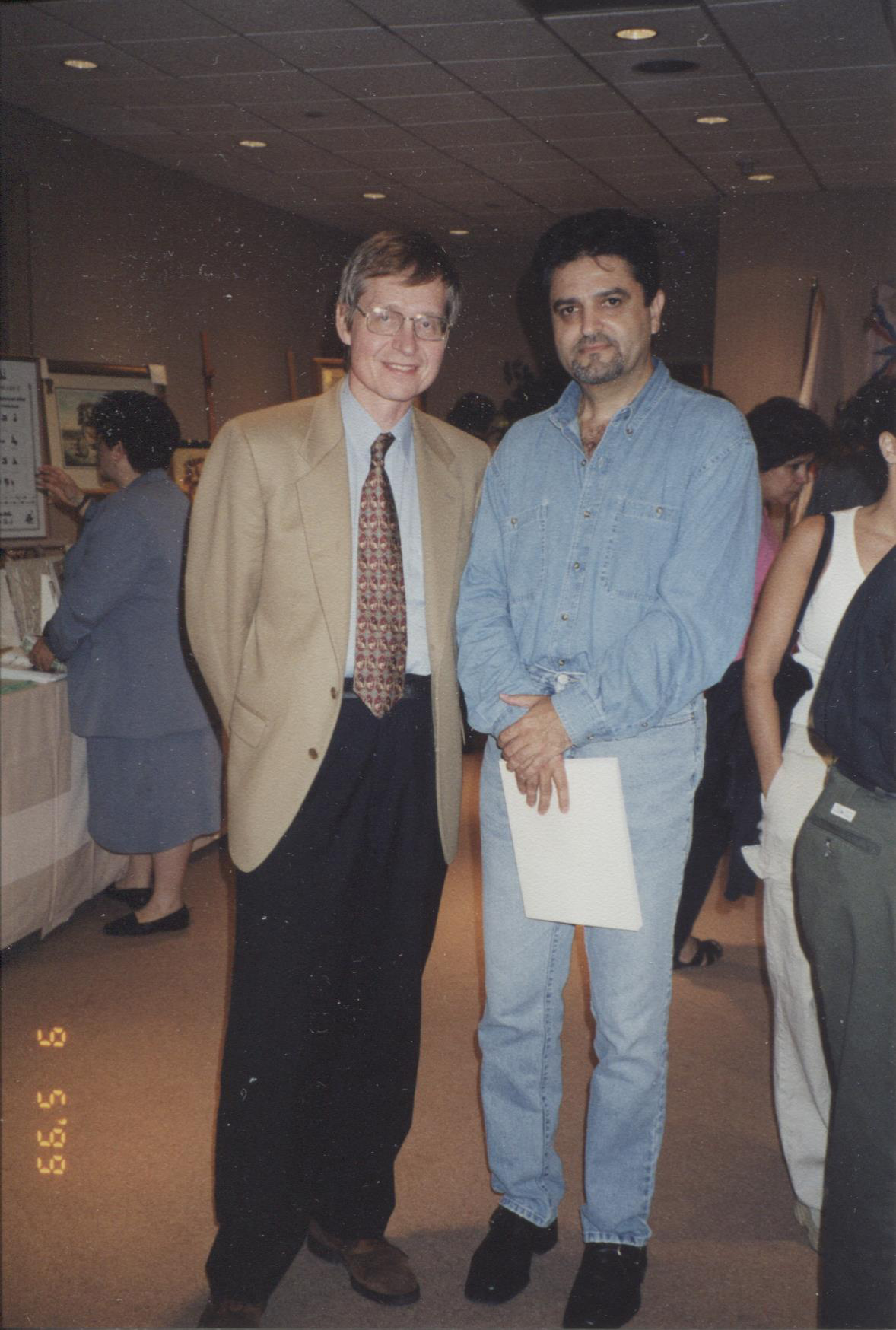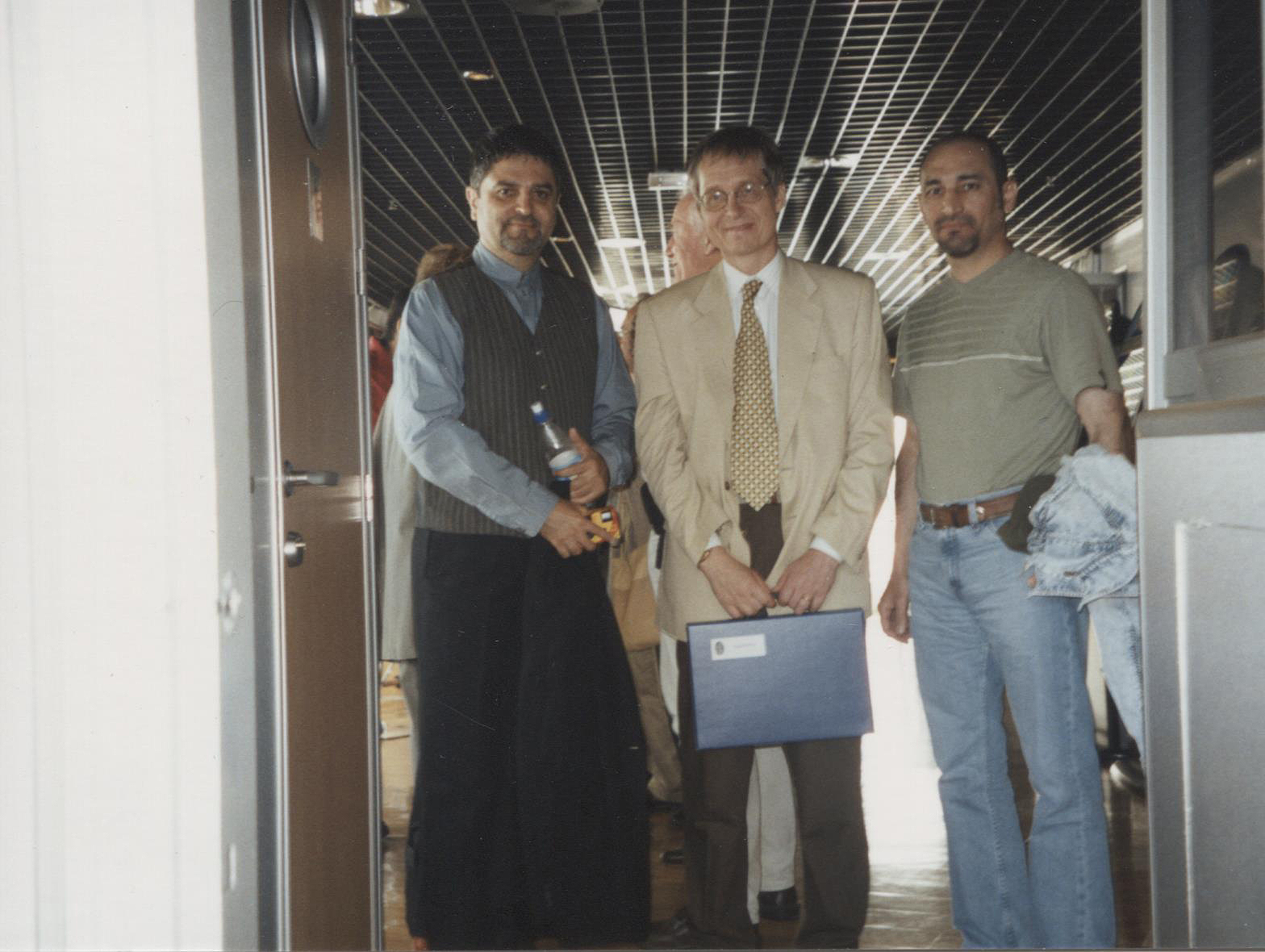|
|
Professor Simo Parpola (honorary Assyrian)
Posted: Tuesday, April 20, 2010 at 02:03 PM CT | Updated: April 17, 2025

 Professor Simo Parpola is an Assyriologist, author, and historian who has inspired millions of Assyrians worldwide. As the world-renowned expert in Cuneiform and Akkadian languages, he has given hope to generations of Assyrians by providing research information explaining the current characteristics of Assyrians in relation to our ancient ancestors.
Professor Simo Parpola is an Assyriologist, author, and historian who has inspired millions of Assyrians worldwide. As the world-renowned expert in Cuneiform and Akkadian languages, he has given hope to generations of Assyrians by providing research information explaining the current characteristics of Assyrians in relation to our ancient ancestors.
Through extensive research and deciphering of clay tablets at the British Museum and many archaeological sites in the Middle East, Dr. Parpola has brought a clearer understanding of the multifaceted Assyrian empire.
For nearly 2,000 years, the Biblical view of Assyria has been portrayed in a negative manner. Fortunately, Dr. Parpola's scientific research has deciphered an ancient Assyrian empire with the ideology and religion that are the foundations of today's western civilization.
In 1993, Dr. Parpola published his profound article “![]() The Assyrian Tree of Life”. It has changed the world's view of the Assyrian empire, both for its role in ancient and contemporary history, and has inspired Assyrians to be prouder of their ancestors, heritage and culture.
The Assyrian Tree of Life”. It has changed the world's view of the Assyrian empire, both for its role in ancient and contemporary history, and has inspired Assyrians to be prouder of their ancestors, heritage and culture.
These academic achievements were made possible by the University of Helsinki in Finland, which has a remarkable 120-year Assyriological teaching and research program. We hope the university grants permanent status to Assyriology to ensure this tradition of academic excellence continues in Europe.
![]() Assyriological Studies in Finland (2007)
Assyriological Studies in Finland (2007)
 Foundation for Finnish Assyriological Research
Foundation for Finnish Assyriological Research
Dr. Parpola received his Ph.D. in Assyriology from the University of Helsinki in 1971 and is currently Professor of Assyriology at the University of Helsinki. He has worked as an Associate Professor at the University of Chicago and as a Visiting Professor at both the University of Padua and Hebrew University, Jerusalem. He was also a research associate and Special Consultant for the Chicago Assyrian Dictionary (CAD). He is the director of the Neo-Assyrian Text Corpus project of the Academy of Finland. He is the Editor-in-Chief of the State Archives of Assyria (SAA). He has been an Editorial Board member of Mesopotamian Civilizations at Johns Hopkins University. He is internationally recognized as one of the foremost scholars on ancient Assyria, and has a long and impressive list of article and book publications on various topics in Assyriology.
    |
| Assyrian Convention | 47th and 48th International Congress of Assyriology |
Interviewed by Mr. Jon Taylor, host of Thin Edge of the Wedge. Professor Simo Parpola reflects on his long and momentous career. He explains how he became an Assyriologist and came to focus on the Assyrians. A key collaboration led to one of the most significant projects in Assyriological history. What was it like to study large groups of tablets in the days before bulk digitisation? How did they identify so many joins remotely? He discusses what has brought him satisfaction, offers advice to younger scholars, and explains what else he has dedicated his time to. — Jon Taylor |
||
| Professor Simo Parpola and the State Archives of Assyria project |
 Assyrian Identity in Ancient Times and Today
Assyrian Identity in Ancient Times and Today
 Assyrians after Assyria
Assyrians after Assyria
![]() The Assyrian Tree of Life
The Assyrian Tree of Life
![]() Assyrian Prophecies, The Assyrian Tree, and The Mesopotamian Origins of Jewish Monotheism, Greek Philosophy, Christian Theology, Gnosticism, and much more
Assyrian Prophecies, The Assyrian Tree, and The Mesopotamian Origins of Jewish Monotheism, Greek Philosophy, Christian Theology, Gnosticism, and much more
![]() The Mesopotamian Soul of Western Culture
The Mesopotamian Soul of Western Culture
![]() Assyrian Library Records
Assyrian Library Records
![]() Neo-Assyrian Treaties from the Royal Archives of Nineveh
Neo-Assyrian Treaties from the Royal Archives of Nineveh
![]() A Letter from Šamaš-šumu-ukīn to Esarhadden (680-669 B.C.)
A Letter from Šamaš-šumu-ukīn to Esarhadden (680-669 B.C.)
 Foundation for Finnish Assyriological Research - organization issues yearly grants to Finnish students and scholars of Assyriologỵ. The website also contains information on the Neo-Assyrian Text Corpus Project, led by Professor Simo Parpola since 1986. The project from the State Archives of Assyria, is to collect all published and unpublished Neo-Assyrian texts into an electronic database, Corpus of Neo-Assyrian (CNA), and maintain the database as a research tool.
Foundation for Finnish Assyriological Research - organization issues yearly grants to Finnish students and scholars of Assyriologỵ. The website also contains information on the Neo-Assyrian Text Corpus Project, led by Professor Simo Parpola since 1986. The project from the State Archives of Assyria, is to collect all published and unpublished Neo-Assyrian texts into an electronic database, Corpus of Neo-Assyrian (CNA), and maintain the database as a research tool.
More publications by Professor Simo Parpola...
 |
 |
|
The Helsinki Neo-Assyrian Dictionary
|
The Helsinki Neo-Assyrian Dictionary
The Neo-Assyrian Text Corpus Project
Director & Editor in Chief,
Dr. Simo Parpola
English/Assyrian - Assyrian/English
Dictionary: The Dawn of Civilization
(From the inside cover)
5000 years of Writing
Writing is Humankind's most far-reaching creation. No other invention has had a longer and greater impact. The history of writing and the history of mankind are synonymous. Everything that happened prior to the invention of writing we label prehistory. Non-verbal communication started with cave paintings. The oldest of these are found in Chauvet, a cave in France. The drawings there were made in 35,000 BC. Some five billion people can read and write today, about 85 percent of the world's population. The invention of writing provided a foundation upon which all subsequent intellectual and technological progress has been built. We enjoy the benefits of modem civilization today because of that foundation.
The transition from the spoken to the written word occurred because writing meets certain needs so much more effectively. Subway ads, priceless first editions, speedy e-mail — all can be traced to clay tokens, precursors of writing, used to count goods in the Middle East. It gradually became, among the people of Mesopotamia, first a form of memorandum, then a system for recording spoken language, and, above all, an alternative medium for communication, thought, and expression. Called cuneiform, it is a written form of the Sumerian language. Developed from pictographic script, when pictures represented words, cuneiform was a syllabic system. A wedge shaped instrument was impressed into soft clay tablets. Cuneiform was used for over 3,000 years. While cuneiform signs were spreading throughout Mesopotamia, other writing systems were appearing and being developed in nearby and distant lands. From one end of the world to the other, people, seeing writing as a divine gift, set themselves to record their past on stone, clay, and papyrus. Among many other significant achievements, the invention of cuneiform allowed the preservation of hymns, divination texts, and what we have to describe as literature. Writing permits analysis, precision, and communication with future generations in a way not possible via the spoken word. It has helped preserve the three major monotheistic religions. The invention of writing laid the foundation for the development of a system of formal education.
Once cuneiform writing was fully evolved, it was sufficiently flexible to be able to record other languages in addition to Sumerian, like Akkadian. In time this writing system became that of the mighty kingdom of Assyria and of the kingdom of Babylon, which rose to power in the 18th century BC. Written fragments have been recovered, largely from the library of Assyrian king Assurbanipal at Nineveh, of great Epics. These epics, which anticipate the great Greek myths, in particular the Labors of Hercules, also contain an extraordinary retelling of the flood story, which foreshadows the account in the Bible. Writing has become the vehicle for the recording of historical events and for the expression of the deepest religious and philosophical concerns of humanity.
 Assyrian Forums
Assyrian Forums Assyrian People
Assyrian People